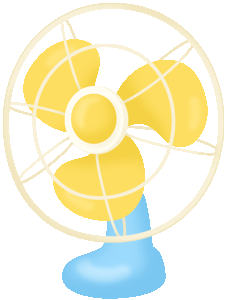 Pain is one of the most common subjective symptoms in clinical practice and serves as a signal of disease, potentially occurring in various parts of the body. When inquiring about pain, it is essential to clarify the location, nature, onset time, range of involvement, and accompanying symptoms. Generally, inquiries can be made in a top-down order (from head to foot).Inquiring about the location of pain
Pain is one of the most common subjective symptoms in clinical practice and serves as a signal of disease, potentially occurring in various parts of the body. When inquiring about pain, it is essential to clarify the location, nature, onset time, range of involvement, and accompanying symptoms. Generally, inquiries can be made in a top-down order (from head to foot).Inquiring about the location of pain Different parts of the body are closely connected through meridians (jingluo) and organs (zangfu). Pain in different locations often reflects corresponding organ and meridian pathologies. Therefore, inquiring about the location of pain can help determine the disease’s location and the changes in the corresponding meridians and organs.
Different parts of the body are closely connected through meridians (jingluo) and organs (zangfu). Pain in different locations often reflects corresponding organ and meridian pathologies. Therefore, inquiring about the location of pain can help determine the disease’s location and the changes in the corresponding meridians and organs. Headache:A headache refers to pain in a specific area of the head or the entire head. In TCM, headaches are classified and treated based on their location. Frontal pain belongs to the Yangming meridian, occipital pain belongs to the Taiyang meridian, bilateral headaches belong to the Shaoyang meridian, and vertex pain belongs to the Jueyin liver meridian. Headaches can be either excess or deficiency. Acute onset with severe pain, such as that caused by wind, cold, heat, dampness, fire, phlegm turbidity, blood stasis, or disturbing the clear yang, is often classified as an excess syndrome. Chronic, milder headaches, such as those caused by deficiency of qi, blood, yin, or yang, leading to insufficient nourishment to the head and empty brain orifices, are often classified as a deficiency syndrome. Certain diseases of the ears, eyes, or nose can also cause headaches. Therefore, in clinical diagnosis, it is essential to combine the medical history and the nature of the headache to differentiate its causes.
Headache:A headache refers to pain in a specific area of the head or the entire head. In TCM, headaches are classified and treated based on their location. Frontal pain belongs to the Yangming meridian, occipital pain belongs to the Taiyang meridian, bilateral headaches belong to the Shaoyang meridian, and vertex pain belongs to the Jueyin liver meridian. Headaches can be either excess or deficiency. Acute onset with severe pain, such as that caused by wind, cold, heat, dampness, fire, phlegm turbidity, blood stasis, or disturbing the clear yang, is often classified as an excess syndrome. Chronic, milder headaches, such as those caused by deficiency of qi, blood, yin, or yang, leading to insufficient nourishment to the head and empty brain orifices, are often classified as a deficiency syndrome. Certain diseases of the ears, eyes, or nose can also cause headaches. Therefore, in clinical diagnosis, it is essential to combine the medical history and the nature of the headache to differentiate its causes. Chest Pain:Chest pain refers to pain in the center or side of the chest. The heart and lungs reside in the chest, so chest pain is often associated with heart and lung diseases. Clinical diagnosis must consider the specific location, nature, and accompanying symptoms of the chest pain.Left chest pain in the precordial area, with intermittent pain and unclear boundaries, often radiating to the left shoulder and inner side of the left arm, is commonly due to heart yang deficiency and phlegm turbidity obstruction, leading to chest bi syndrome. This corresponds to modern medicine’s myocardial ischemia and angina. Severe chest pain, like stabbing or constricting pain, with a grayish complexion, cold hands and feet, and profuse sweating, is often due to sudden closure of the heart vessels, seen in true heart pain (jue xin tong). This corresponds to modern medicine’s angina pectoris and myocardial infarction, which can be life-threatening, with some patients dying within minutes or half an hour.Chest pain with cough, wheezing, and feverish face is often due to heat evil obstructing the lungs, leading to lung collateral dysfunction. Chest pain with fever, cough, and expectoration of purulent blood is often due to phlegm-heat obstructing the lungs, leading to heat and blood stasis, seen in lung abscesses. Chest pain accompanied by tidal fever, night sweats, flushed cheeks, and blood-streaked phlegm is often due to lung yin deficiency and deficiency fire scorching the collaterals, seen in pulmonary tuberculosis. Chest pain with high fever and expectoration of rust-colored phlegm is due to lung heat accumulation.
Chest Pain:Chest pain refers to pain in the center or side of the chest. The heart and lungs reside in the chest, so chest pain is often associated with heart and lung diseases. Clinical diagnosis must consider the specific location, nature, and accompanying symptoms of the chest pain.Left chest pain in the precordial area, with intermittent pain and unclear boundaries, often radiating to the left shoulder and inner side of the left arm, is commonly due to heart yang deficiency and phlegm turbidity obstruction, leading to chest bi syndrome. This corresponds to modern medicine’s myocardial ischemia and angina. Severe chest pain, like stabbing or constricting pain, with a grayish complexion, cold hands and feet, and profuse sweating, is often due to sudden closure of the heart vessels, seen in true heart pain (jue xin tong). This corresponds to modern medicine’s angina pectoris and myocardial infarction, which can be life-threatening, with some patients dying within minutes or half an hour.Chest pain with cough, wheezing, and feverish face is often due to heat evil obstructing the lungs, leading to lung collateral dysfunction. Chest pain with fever, cough, and expectoration of purulent blood is often due to phlegm-heat obstructing the lungs, leading to heat and blood stasis, seen in lung abscesses. Chest pain accompanied by tidal fever, night sweats, flushed cheeks, and blood-streaked phlegm is often due to lung yin deficiency and deficiency fire scorching the collaterals, seen in pulmonary tuberculosis. Chest pain with high fever and expectoration of rust-colored phlegm is due to lung heat accumulation. Flank Pain:Flank pain refers to pain on one or both sides of the flank. Therefore, flank pain is generally related to liver and gallbladder diseases. The most common causes include liver qi stagnation, liver-gallbladder damp-heat, liver-gallbladder fire, liver-gallbladder yin deficiency, blood stasis obstructing the collaterals, and phlegm accumulation in the chest and flank, all of which can obstruct qi movement and cause flank pain.
Flank Pain:Flank pain refers to pain on one or both sides of the flank. Therefore, flank pain is generally related to liver and gallbladder diseases. The most common causes include liver qi stagnation, liver-gallbladder damp-heat, liver-gallbladder fire, liver-gallbladder yin deficiency, blood stasis obstructing the collaterals, and phlegm accumulation in the chest and flank, all of which can obstruct qi movement and cause flank pain. Epigastric Pain:Epigastric pain refers to pain in the upper abdomen, below the xiphoid process. The stomach governs descent and has the function of receiving and digesting food. If the stomach fails to harmonize and descend, or if qi movement is obstructed, it can lead to epigastric pain. If pain worsens after eating, it often indicates an excess syndrome due to cold, heat, qi stagnation, phlegm-blood, or food accumulation. If pain alleviates after eating, it often indicates a deficiency syndrome due to stomach yin deficiency or stomach yang insufficiency, leading to insufficient nourishment of the stomach. If epigastric pain is irregular and persistent, accompanied by significant weight loss, it may indicate gastric cancer.
Epigastric Pain:Epigastric pain refers to pain in the upper abdomen, below the xiphoid process. The stomach governs descent and has the function of receiving and digesting food. If the stomach fails to harmonize and descend, or if qi movement is obstructed, it can lead to epigastric pain. If pain worsens after eating, it often indicates an excess syndrome due to cold, heat, qi stagnation, phlegm-blood, or food accumulation. If pain alleviates after eating, it often indicates a deficiency syndrome due to stomach yin deficiency or stomach yang insufficiency, leading to insufficient nourishment of the stomach. If epigastric pain is irregular and persistent, accompanied by significant weight loss, it may indicate gastric cancer. Abdominal Pain:Abdominal pain refers to pain occurring in the area below the epigastrium and above the pubic hairline. The abdominal area is extensive, with distinctions between the upper abdomen, lower abdomen, umbilical area, and lower abdomen. The area above the umbilicus is called the upper abdomen, associated with the spleen, stomach, and liver-gallbladder; the area around the umbilicus is called the umbilical area, associated with the spleen and small intestine; the area below the umbilicus to the pubic hairline is called the lower abdomen, associated with the bladder, large and small intestines, and uterus; the sides of the lower abdomen are called the lower sides, where the liver meridian runs. Abdominal pain caused by cold congealing, heat accumulation, cold-dampness, damp-heat, qi stagnation, stones, blood stasis, food accumulation, and parasitic accumulation is classified as an excess syndrome, with severe pain and tenderness. Abdominal pain caused by qi deficiency, blood deficiency, or yang deficiency is classified as a deficiency syndrome, with milder pain and tenderness.
Abdominal Pain:Abdominal pain refers to pain occurring in the area below the epigastrium and above the pubic hairline. The abdominal area is extensive, with distinctions between the upper abdomen, lower abdomen, umbilical area, and lower abdomen. The area above the umbilicus is called the upper abdomen, associated with the spleen, stomach, and liver-gallbladder; the area around the umbilicus is called the umbilical area, associated with the spleen and small intestine; the area below the umbilicus to the pubic hairline is called the lower abdomen, associated with the bladder, large and small intestines, and uterus; the sides of the lower abdomen are called the lower sides, where the liver meridian runs. Abdominal pain caused by cold congealing, heat accumulation, cold-dampness, damp-heat, qi stagnation, stones, blood stasis, food accumulation, and parasitic accumulation is classified as an excess syndrome, with severe pain and tenderness. Abdominal pain caused by qi deficiency, blood deficiency, or yang deficiency is classified as a deficiency syndrome, with milder pain and tenderness. Back Pain:Back pain refers to pain in the area below the large vertebra and above the lower ribs. It is often caused by wind-dampness, wind-cold, cold-dampness, blood stasis, overexertion, or trauma. Back pain that radiates to the neck is often due to cold evil invading the Taiyang meridian, or cold congealing and blood stasis obstructing the meridians. It can also be caused by overexertion: back pain that restricts bending and stretching is often due to cold-dampness, trauma, overexertion, or blood stasis obstructing the meridians, and can also be seen in damage to the governing vessel.
Back Pain:Back pain refers to pain in the area below the large vertebra and above the lower ribs. It is often caused by wind-dampness, wind-cold, cold-dampness, blood stasis, overexertion, or trauma. Back pain that radiates to the neck is often due to cold evil invading the Taiyang meridian, or cold congealing and blood stasis obstructing the meridians. It can also be caused by overexertion: back pain that restricts bending and stretching is often due to cold-dampness, trauma, overexertion, or blood stasis obstructing the meridians, and can also be seen in damage to the governing vessel. Lumbar Pain:Lumbar pain refers to pain in the center of the lower back or on both sides. The lower back is the residence of the kidneys, so lumbar pain is often associated with kidney and surrounding tissue pathologies. Lumbar pain due to deficiency of kidney essence, qi, or yin, leading to insufficient warmth and nourishment, is classified as a deficiency syndrome. Lumbar pain due to obstruction of the meridians by wind, cold, dampness, or blood stasis is classified as an excess syndrome. Lumbar pain primarily on both sides, with a dull ache that worsens with activity, often indicates kidney deficiency; lumbar pain that is cold and heavy, worsening in rainy weather, often indicates invasion of cold-dampness; lumbar pain radiating to the lower limbs, presenting as radiating pain, with limited leg elevation, often indicates meridian obstruction, commonly seen in sciatica; sudden severe lumbar pain radiating to the lower abdomen with hematuria often indicates obstruction by stones; lumbar pain that wraps around like a belt often indicates damage to the belt vessel. In clinical diagnosis and treatment, it is necessary to combine the medical history and the nature of the pain to determine the cause of lumbar pain.
Lumbar Pain:Lumbar pain refers to pain in the center of the lower back or on both sides. The lower back is the residence of the kidneys, so lumbar pain is often associated with kidney and surrounding tissue pathologies. Lumbar pain due to deficiency of kidney essence, qi, or yin, leading to insufficient warmth and nourishment, is classified as a deficiency syndrome. Lumbar pain due to obstruction of the meridians by wind, cold, dampness, or blood stasis is classified as an excess syndrome. Lumbar pain primarily on both sides, with a dull ache that worsens with activity, often indicates kidney deficiency; lumbar pain that is cold and heavy, worsening in rainy weather, often indicates invasion of cold-dampness; lumbar pain radiating to the lower limbs, presenting as radiating pain, with limited leg elevation, often indicates meridian obstruction, commonly seen in sciatica; sudden severe lumbar pain radiating to the lower abdomen with hematuria often indicates obstruction by stones; lumbar pain that wraps around like a belt often indicates damage to the belt vessel. In clinical diagnosis and treatment, it is necessary to combine the medical history and the nature of the pain to determine the cause of lumbar pain. Limbs Pain:Limbs pain refers to pain in the muscles, tendons, and joints of the limbs. It is often caused by invasion of wind, cold, and dampness, or by damp-heat, heat toxin, overexertion, trauma, phlegm-stasis, or stasis-heat obstructing the circulation of qi and blood. It may also be due to insufficient qi and blood or kidney deficiency, leading to inadequate nourishment of the limbs. If there is only heel pain or knee pain, it often indicates kidney deficiency, commonly seen in the elderly or those with physical weakness.
Limbs Pain:Limbs pain refers to pain in the muscles, tendons, and joints of the limbs. It is often caused by invasion of wind, cold, and dampness, or by damp-heat, heat toxin, overexertion, trauma, phlegm-stasis, or stasis-heat obstructing the circulation of qi and blood. It may also be due to insufficient qi and blood or kidney deficiency, leading to inadequate nourishment of the limbs. If there is only heel pain or knee pain, it often indicates kidney deficiency, commonly seen in the elderly or those with physical weakness. Generalized Pain:Generalized pain refers to pain felt in the head, body, back, and limbs. There is a distinction between excess and deficiency. Generally, new onset generalized pain often indicates an excess syndrome, commonly due to invasion of epidemic toxins, heat, damp-heat, wind-cold, or wind-dampness, leading to qi stagnation. If a long-term bedridden patient experiences generalized pain, it often indicates a deficiency syndrome, commonly due to qi and blood deficiency or poor circulation of qi and blood, leading to inadequate nourishment of the body. Additionally, patients with high fever often experience generalized pain during or after fever, often due to heat evil damaging the body’s yin, leading to inadequate nourishment of the body.Inquiring about the nature of pain
Generalized Pain:Generalized pain refers to pain felt in the head, body, back, and limbs. There is a distinction between excess and deficiency. Generally, new onset generalized pain often indicates an excess syndrome, commonly due to invasion of epidemic toxins, heat, damp-heat, wind-cold, or wind-dampness, leading to qi stagnation. If a long-term bedridden patient experiences generalized pain, it often indicates a deficiency syndrome, commonly due to qi and blood deficiency or poor circulation of qi and blood, leading to inadequate nourishment of the body. Additionally, patients with high fever often experience generalized pain during or after fever, often due to heat evil damaging the body’s yin, leading to inadequate nourishment of the body.Inquiring about the nature of pain Distending Pain:Distending pain refers to pain accompanied by a feeling of fullness. Commonly seen in the chest, flank, and abdominal areas, it often occurs intermittently and is primarily due to qi stagnation. If the head experiences distending pain, it is often due to liver yang hyperactivity or liver fire, leading to qi and blood stagnation in the brain orifices; abdominal distending pain is often due to qi stagnation and poor qi movement, and can also be seen in deficiency syndromes.
Distending Pain:Distending pain refers to pain accompanied by a feeling of fullness. Commonly seen in the chest, flank, and abdominal areas, it often occurs intermittently and is primarily due to qi stagnation. If the head experiences distending pain, it is often due to liver yang hyperactivity or liver fire, leading to qi and blood stagnation in the brain orifices; abdominal distending pain is often due to qi stagnation and poor qi movement, and can also be seen in deficiency syndromes. Stabbing Pain:Stabbing pain refers to pain that feels like being pricked by a needle, often caused by blood stasis obstructing the circulation of blood. It commonly occurs in the chest, flank, and abdominal areas.
Stabbing Pain:Stabbing pain refers to pain that feels like being pricked by a needle, often caused by blood stasis obstructing the circulation of blood. It commonly occurs in the chest, flank, and abdominal areas. Cold Pain:Cold pain refers to pain accompanied by a cold sensation and a preference for warmth. It commonly occurs in the lower back, abdomen, limbs, and joints. It is caused by cold evil obstructing the collaterals, leading to congealing and stagnation, classified as an excess cold syndrome; or due to insufficient yang qi, leading to failure of the organs and meridians to warm, classified as a deficiency cold syndrome.
Cold Pain:Cold pain refers to pain accompanied by a cold sensation and a preference for warmth. It commonly occurs in the lower back, abdomen, limbs, and joints. It is caused by cold evil obstructing the collaterals, leading to congealing and stagnation, classified as an excess cold syndrome; or due to insufficient yang qi, leading to failure of the organs and meridians to warm, classified as a deficiency cold syndrome. Burning Pain:Burning pain refers to pain accompanied by a burning sensation, with a preference for coolness and aversion to heat. It is commonly seen in the epigastric area, chest, throat, and joints. It is caused by heat evil flowing through the meridians, classified as an excess heat syndrome; or due to yin deficiency and excess fire, classified as a deficiency heat syndrome.
Burning Pain:Burning pain refers to pain accompanied by a burning sensation, with a preference for coolness and aversion to heat. It is commonly seen in the epigastric area, chest, throat, and joints. It is caused by heat evil flowing through the meridians, classified as an excess heat syndrome; or due to yin deficiency and excess fire, classified as a deficiency heat syndrome. Heavy Pain:Heavy pain refers to pain accompanied by a feeling of heaviness in the body. It is commonly seen in the head, limbs, lower back, and throughout the body. It is often due to dampness obstructing qi movement, with damp evil causing obstruction. However, if it is heavy pain in the head, it may be due to liver yang hyperactivity and qi and blood stagnation.
Heavy Pain:Heavy pain refers to pain accompanied by a feeling of heaviness in the body. It is commonly seen in the head, limbs, lower back, and throughout the body. It is often due to dampness obstructing qi movement, with damp evil causing obstruction. However, if it is heavy pain in the head, it may be due to liver yang hyperactivity and qi and blood stagnation. Soreness Pain:Soreness pain refers to pain accompanied by a feeling of soreness and weakness. There are distinctions between excess and deficiency. Pain due to dampness, wind, epidemic toxins, etc., obstructing the meridians, muscles, and joints, leading to poor circulation of qi and blood, is classified as an excess soreness pain; while pain due to long-term illness leading to qi and blood deficiency, muscle malnourishment, or kidney deficiency, leading to insufficient nourishment of the bone marrow, is classified as a deficiency soreness pain. Additionally, intense exercise and muscle fatigue can also cause soreness pain, which is a normal physiological phenomenon without clinical significance.
Soreness Pain:Soreness pain refers to pain accompanied by a feeling of soreness and weakness. There are distinctions between excess and deficiency. Pain due to dampness, wind, epidemic toxins, etc., obstructing the meridians, muscles, and joints, leading to poor circulation of qi and blood, is classified as an excess soreness pain; while pain due to long-term illness leading to qi and blood deficiency, muscle malnourishment, or kidney deficiency, leading to insufficient nourishment of the bone marrow, is classified as a deficiency soreness pain. Additionally, intense exercise and muscle fatigue can also cause soreness pain, which is a normal physiological phenomenon without clinical significance. Cramping Pain:Cramping pain refers to severe pain, akin to being cut by a knife. It is often caused by tangible excess evil obstructing qi movement, or by external cold evil causing cold congealing and qi stagnation, leading to contraction and spasm of the meridians. Pain caused by cold evil is generally severe, such as cramping pain in the stomach due to cold evil invading the stomach.
Cramping Pain:Cramping pain refers to severe pain, akin to being cut by a knife. It is often caused by tangible excess evil obstructing qi movement, or by external cold evil causing cold congealing and qi stagnation, leading to contraction and spasm of the meridians. Pain caused by cold evil is generally severe, such as cramping pain in the stomach due to cold evil invading the stomach. Empty Pain:Empty pain refers to pain accompanied by a feeling of emptiness. Commonly seen in the head or lower abdomen, it is often due to qi and blood deficiency, insufficient yin essence, leading to inadequate nourishment of tissues and organs.
Empty Pain:Empty pain refers to pain accompanied by a feeling of emptiness. Commonly seen in the head or lower abdomen, it is often due to qi and blood deficiency, insufficient yin essence, leading to inadequate nourishment of tissues and organs. Dull Pain:Dull pain refers to pain that is relatively mild, with the patient’s sensation being not obvious and tolerable, but persistent. It is often due to deficiency of yang qi, insufficient essence and blood, leading to inadequate nourishment of the meridians and organs. Some excess heat pains may also present as dull pain at the onset, gradually worsening over time. Therefore, new onset dull pain should not be immediately classified as a deficiency syndrome.
Dull Pain:Dull pain refers to pain that is relatively mild, with the patient’s sensation being not obvious and tolerable, but persistent. It is often due to deficiency of yang qi, insufficient essence and blood, leading to inadequate nourishment of the meridians and organs. Some excess heat pains may also present as dull pain at the onset, gradually worsening over time. Therefore, new onset dull pain should not be immediately classified as a deficiency syndrome. End
End
Recommended Reading:
【Understanding the Four Diagnostic Methods in TCM: Inquiry on Sweating】【Understanding the Four Diagnostic Methods in TCM: Inquiry on Current Symptoms】【Understanding the Four Diagnostic Methods in TCM: Inquiry on Personal Life History】
Copyright Statement:
-
This article is adapted from: 《Introduction to Traditional Chinese Medicine for Beginners》, edited by Xu Yihan;If there is any infringement, please delete.
-
Copyright belongs to the relevant rights holders. If there is any improper use, please contact us.
-
This public account shares articles for learning, communication, and reference only. Please do not use any medications without proper guidance.
 Contact Us
Contact Us Website: http://tcm.ckcest.cnTel: 010-64089578Email: [email protected]
Website: http://tcm.ckcest.cnTel: 010-64089578Email: [email protected]
 Click the end of the article “Read the original text” to progress together!
Click the end of the article “Read the original text” to progress together!

